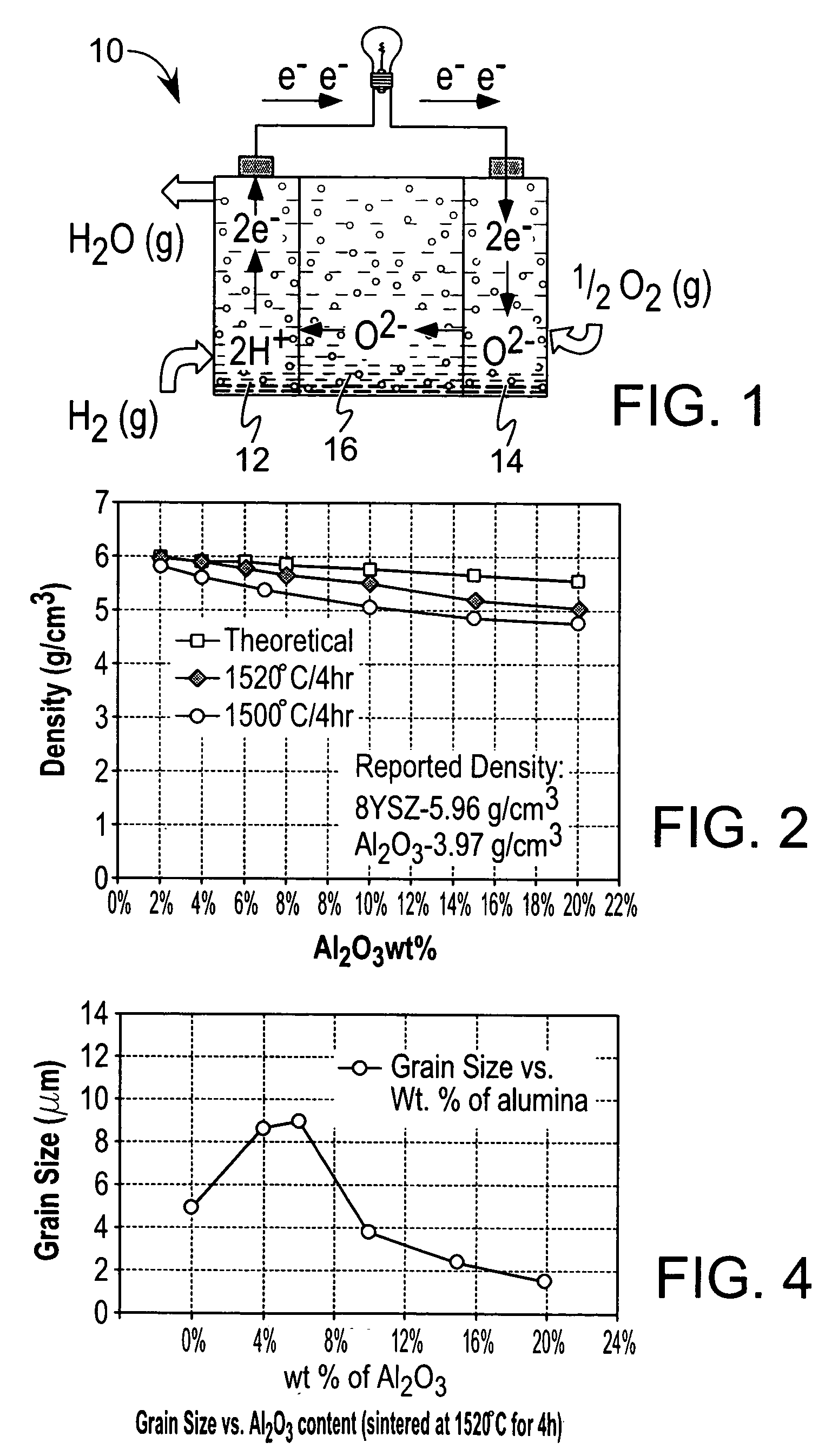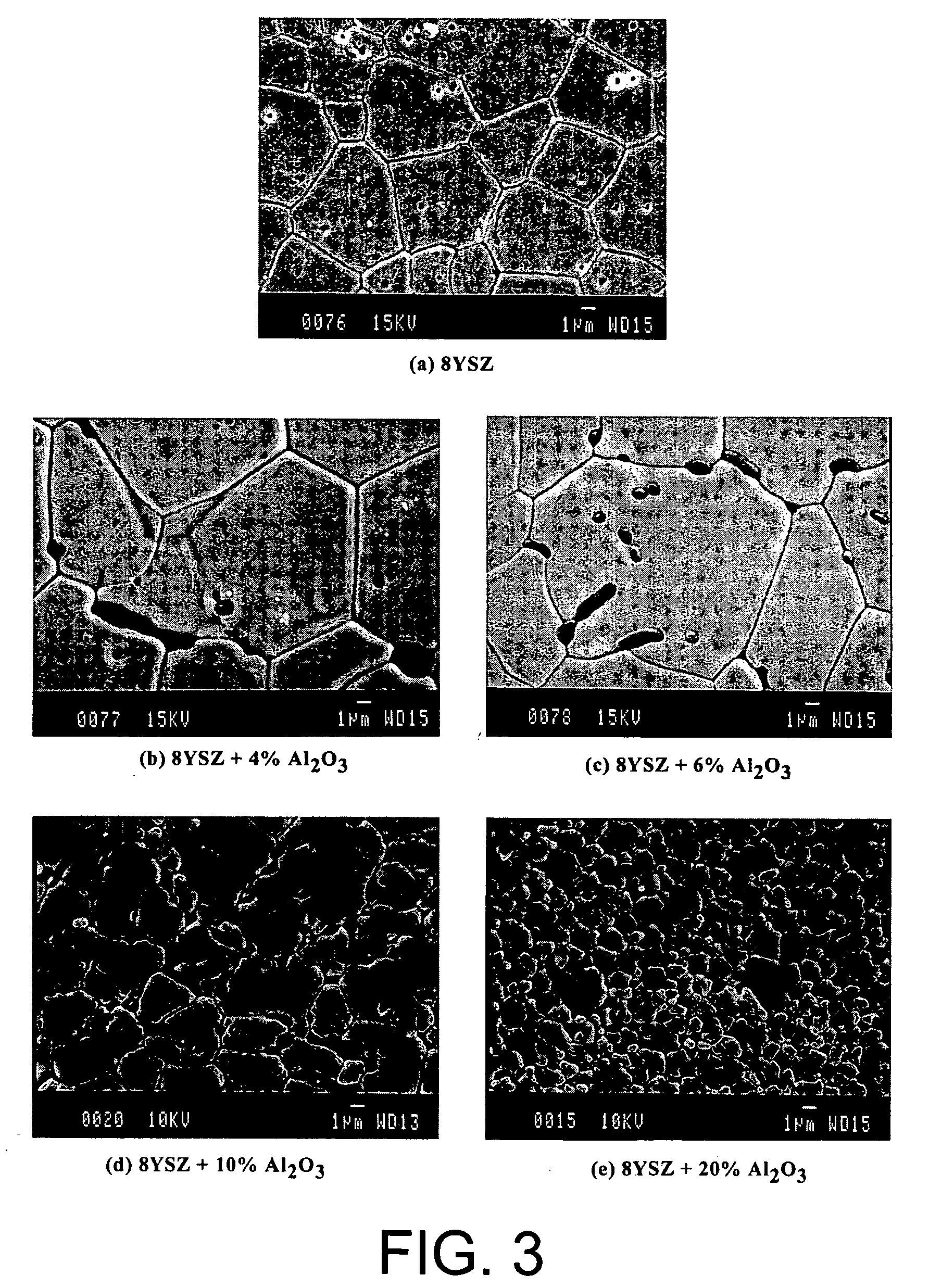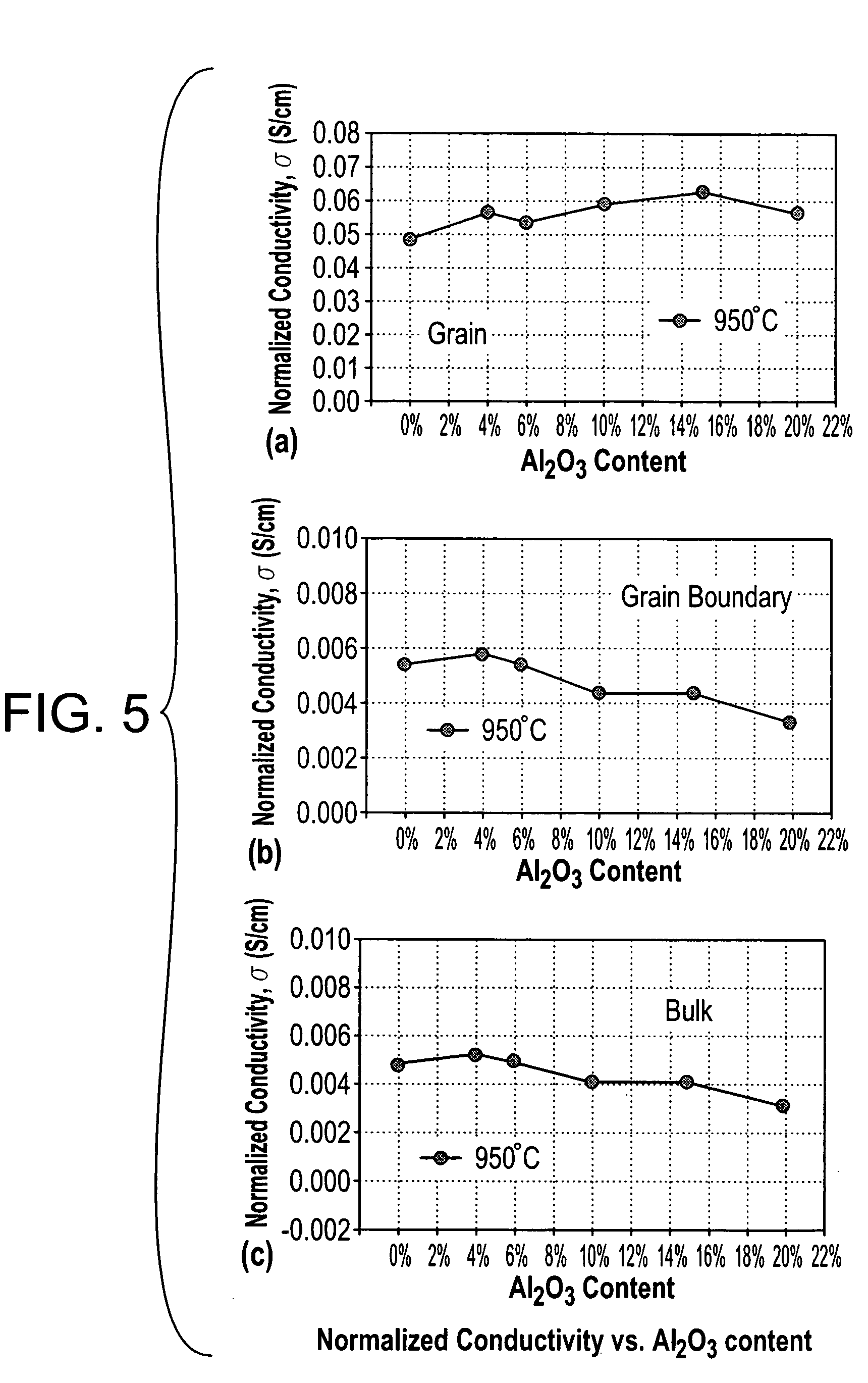Ceramic-ceramic nanocomposite electrolyte
a nano-composite electrolyte and ceramic-ceramic technology, applied in the field of ceramic-ceramic nano-composite electrolyte with enhanced conductivity, can solve the problems of cell failure, solid oxide fuel cell suffer, etc., and achieve the effects of increasing ionic conductivity, improving power density, and increasing conductivity
- Summary
- Abstract
- Description
- Claims
- Application Information
AI Technical Summary
Benefits of technology
Problems solved by technology
Method used
Image
Examples
example 1
[0031] Yttrium stabilized zirconia (YSZ) containing 8 mole % yttrium was obtained from Tosoh Corporation. The YSZ was mixed with nanosize (24 nm) alumina (Al2O3) obtained from Nanophase Technologies Corporation. The two powders were mixed in various proportions in a mortar and pestle and then subsequently pressed into discs (1.27 cm. in diameter and 0.15 cm thick) with 2.5 ton cm−2 pressure and then sintered at 1500° C. to 1520° C. for 4 hours. The densities of the sintered specimens were measured by the Archimedes principle. The results are shown in Table 1. The electrical conductivity of each sample was measured by ac and dc techniques in the 300-975° C. temperature range. For the ac technique, a Solartron 1260 impedance analyzer with 1287 electrochemical interface was used to obtain impedance data in the 0.1-106 Hz frequency range. The specimen with the highest density for a given composition (corresponding to a sintering temperature of 1520° C.) was characterized by the ac techn...
example 2
[0038] Scandia stabilized zirconia (ScSZ) (6 mol %) was obtained from Tosoh Corporation and nanosize (24 nm) Al2O3 powder was obtained from Nanophase Technologies Corporation. The two powders were mixed in various proportions (0, 10, 20 and 30 wt % Al2O3) in a mortar and pestle. Cylindrical specimens of different compositions of powders were pressed in a cold isostatic press at 3 ton / cm2 pressure using collapsable tygon tubes. The cylindrical specimens were heated at a rate of 20° C. / min. to 1520° C. in air and kept at this temperature for 4 hours and then cooled at a rate of 20° C. / min. to 950° C. and kept there for 1 hour before they were finally allowed to cool in the furnace to room temperature by shutting off the power to the furnace. This procedure was followed to minimize the Al2O3 particle coarsening during heating and to have high cooling rates during cooling. Several discs of 0.5 mm thickness were cut using a diamond saw from these cylindrical specimens.
[0039] The density...
PUM
| Property | Measurement | Unit |
|---|---|---|
| Grain size | aaaaa | aaaaa |
| Grain size | aaaaa | aaaaa |
| Temperature | aaaaa | aaaaa |
Abstract
Description
Claims
Application Information
 Login to View More
Login to View More - R&D
- Intellectual Property
- Life Sciences
- Materials
- Tech Scout
- Unparalleled Data Quality
- Higher Quality Content
- 60% Fewer Hallucinations
Browse by: Latest US Patents, China's latest patents, Technical Efficacy Thesaurus, Application Domain, Technology Topic, Popular Technical Reports.
© 2025 PatSnap. All rights reserved.Legal|Privacy policy|Modern Slavery Act Transparency Statement|Sitemap|About US| Contact US: help@patsnap.com



